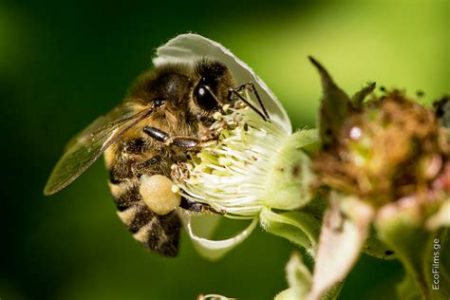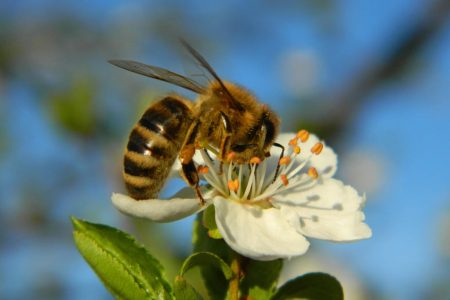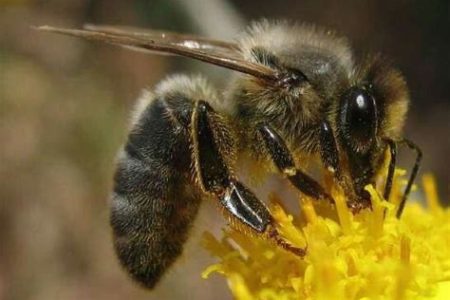The Italian Honey Bee.
(Apis Mellifera Ligustica)
Characteristics of the Italian Honey Bee.
The Italian honey bee is the most widely distributed of all honey bees, and has proved adaptable to most climates from subtropical to cool temperate, but it is less well adapted in humid tropical regions. It is very prolific but brood rearing starts late and lasts long into late summer or autumn, irrespective of nectar flow. It is therefore at its greatest advantage in those regions where favourable weather prevails throughout the summer, and there is a long, uninterrupted supply of nectar. It is tends to underperform where the main nectar flow occurs in spring, or where the weather is uncertain, as in the cool maritime regions. In poorer districts a honey crop may only be obtainable at the expense of heavy autumn feeding, which is often to the detriment to the long term health of the colony.
The Italian bee has a large swarming tendency with few queen cells, as is the experience of many beekeepers in Great Britain. This may possibly be due to the use of brood chambers which are too small for such prolific breeders. In the migratory beekeeping practised in America it is not unusual to operate without a queen excluder, so that the breeding area is unrestricted. Experience shows that the queen seldom goes above the second box of the hive.
Italian bees, having been conditioned to the warmer climate of the central Mediterranean, are less able to cope with the “hard” winters and cool, wet springs of more Northern Europe latitudes. Their bodies are smaller and their overhairs shorter than those of the darker races, and they do not form such tight winter clusters. More food has to be consumed to compensate for the greater heat loss from the cluster. The tendency to raise brood late in autumn also increases food consumption. Unlike the native British bee, they are unable to retain faeces in the gut for long periods and require more frequent cleaning flights, they are more likely to be lured out of the hive by bright winter sunshine.
There is no clear evidence that the Italian bee is any more resistant to acarine than the British bee and no epidemic corresponding to Isle of Wight ‘disease’ was ever reported from northern Europe. Moreover, acarine is undoubtedly a problem among the Italian bees of the United States of America. The Italian bee also appears to be less tolerant of nosema than our native species.
The Italian species tends to forage over shorter distances than either the Caucasian or British bees and may therefore be less effective in poorer nectar flows. It apparently lacks the ability to ripen heather honey before sealing.
Italian bees are much more prone to drifting and robbing than the other principal races of Europe. It has a reputation for gentleness, but hybrids with the darker races can be especially vicious. This is readily apparent in the Southern counties of England, where the Italian bee is more prolific.

The Caucasian Honey Bee
(Apis Mellifera Caucasica)
The Caucasian honey bee is indigenous to the mountains and southern valleys of the Caucasus, to the Black Sea coast in Anatolia. The climate varies from subtropical on the coast to cool of the mountains, mountain bees are larger and darker, with longer overhair, than those from the lowland region

The Carniolan Honey Bee
(Apis Mellifera Carnica)
The Carniolan honey bee of Slovenia and Austria is the nearest relative of the Italian, but it is larger and darker, the characteristic yellow rings of the Italian Bee being replaced by dark bands. The carnica territory covers a large area of south-eastern Europe, and there are numerous regional variations.

The British Honey Bee
(Apis Mellifera Mellifera)
The British Bee has fewer swarms and replaces the queen approximately every 3 years. It has many important qualities that have evolved in the strain over thousands of years, making it entirely suited to our climate, over other imported sub-species and have been found to be easy to handle and docile.

